Earlier this month, archaeologists from the National Academy of Sciences of Armenia unearthed a relic of the most ancient religious proportions–a 4th century church, which is one of the oldest churches ever found. The University of Munster’s college, located in Germany, shared they have been exploring a site in the Ararat Plain since 2018. The church’s remains were found only recently. Using geophysical methods of excavation, the team discovered an octagonal building with four cruciform extensions.
“Typologically, the find corresponds to early Christian memorial buildings,” the press release continued. “In the cross-shaped extensions, the researchers discovered the remains of wooden platforms, which were radiocarbon dated to the mid-4th century AD.”
The location of the priceless find was in the rural town of Artaxata, the capital of Armenia, which the article points out was the first Christian state ever established. The article shares the church had terracotta and mortar flooring 100 feet in diameter. While not substantial in size, the historical significance far outweighs the stones located.
If this one is truly one of the oldest churches in history, where are the others around this planet? Beliefnet did some digging of our own.
But first…Artaxata Church (Artaxata, Armenia) — AD 350
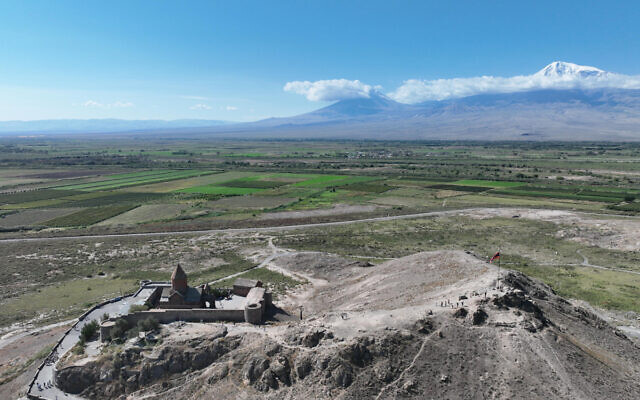
Surprisingly, the most recently discovered among the oldest churches in the world wouldn’t make the Top 20. Other well-known and visited churches, cathedrals, or religious buildings that outdate the ruins of Artaxata are:
- Cathedral of Trier (AD 340) in Trier, Germany has been rebuilt almost a dozen times, but there are sections of the outer brick and central walls that are original to this cathedral, which is now a tourist attraction.
- Church of the Holy Sepulchre (AD 335) is the shrine in the Christian Quarter of Jerusalem, which is the ancient cave where Jesus was buried and rose from the dead. Although the tomb, which belonged to Joseph of Arimathea, is considerably older given the timeline of Christ, it wasn’t built into a church until Emperor Constantine ordered it so in 326 and completed in 335.
- St. Peter’s Basilica (AD 333) is the Holy Seat of Catholicism. Although there are few ruins that remain at the Vatican of the original church, the spot is recognized as the actual grave of the first-ever Bishop of Rome, Simon Peter, which is where is was historically martyred for teaching about Jesus Christ.
- Church of the Nativity (AD 326) is the oldest site still used as a place of Christian worship anywhere in the world. Located on Bethlehem’s West Bank in Palestine, it is also the world’s 13th among oldest churches discovered in history. The grotto derives its names as it is considered the birthplace of Jesus.
HM. Hagia Sophia (Iznik, Turkey) — AD 325
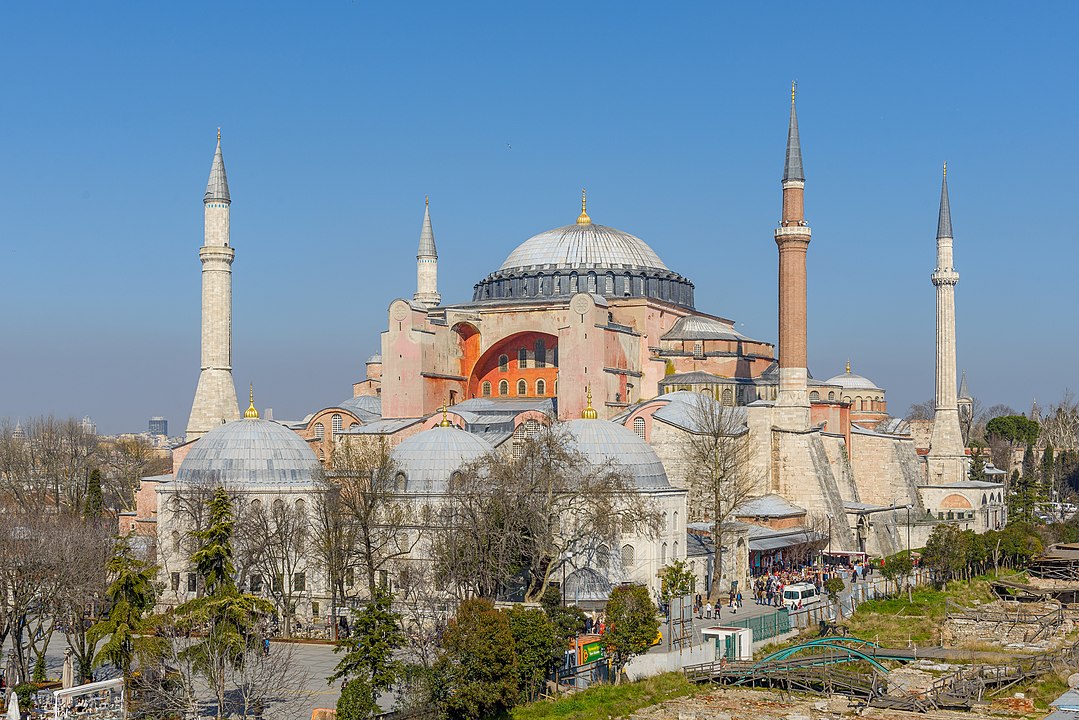
When Emperor Constantine I created a Christian state outside the Roman Empire to welcome Christ-followers (known as the Byzantine Empire), the original church–known as the Megale Ekklesia) was built in AD 325 and eventually consecrated by his son, Constantine II, in AD 360. The city, known as Constantinople, was the place of a catastrophic riot. The church was pillaged and set on fire in AD 404.
Rebuilt again in AD 415 by Theodosius II, the church was burned to ash again during the Nika insurrection in AD 532, leaving almost none of the original building except for a few remains, which are displayed in the current garden and why this is only an honorable mention of this list. What stands today, the Hagia Sophia, was originally a Christian church, constructed by Justinian I in only six years. Following the Ottoman Empire’s invasion in 1331, the location was converted into the Orhan Mosque.
10. Mar Sarkas (Maaloula, Syria) — AD 324
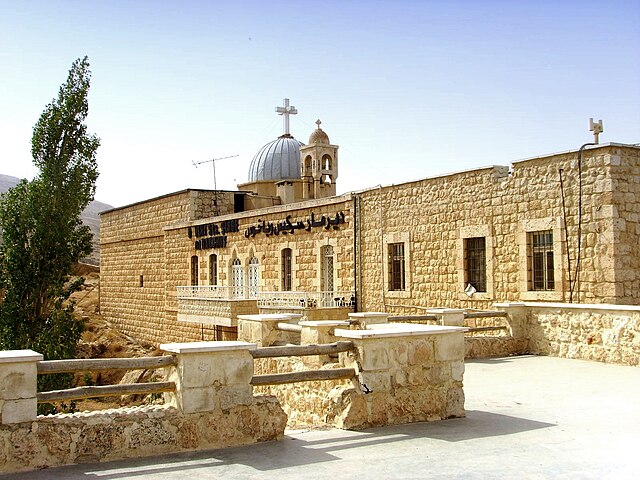
Also known as Saint Sarkis Monastic Complex, this temple is now a convent where English-speaking nuns offer tours year-round. Mar Sarkis, in central-west Syria, has its festival every October 7. Two of the oldest icons in the world are inside, including one depicting the Last Supper. Although the date isn’t exact by historians and theologians, it is believed this is a pre-Constantian location because of the prohibited horseshoe-shaped altar. Those types of altars were built with channels for draining blood during blood sacrifices during Pagan rituals, but as a matter of historical discourse, it is in the convent today.
9. Archbasilica of Saint John Lateran (Rome, Italy) — AD 324
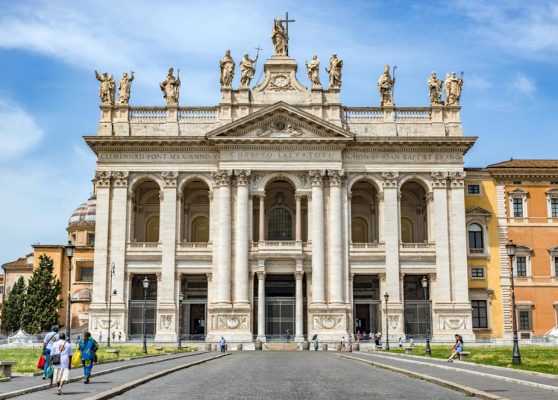
A “Basilica” (a Greek word for “royal house”) is a church recognized by the Pope for any unique purpose related to the Catholic Church. The structure of Saint John Lateran in Rome is the only “archbasilica” in the world because it’s considered the original birthplace of the Catholic Church. The building, which is still open today as a church and a museum, has survived many natural disasters, including fires and earthquakes. It’s also home to the “Scala Santa,” meaning Holy Stairs, as rumored to be used by Jesus Christ following his days of Resurrection.
8. Rotunda of Galerius (Thessaloniki, Greece) — AD 311
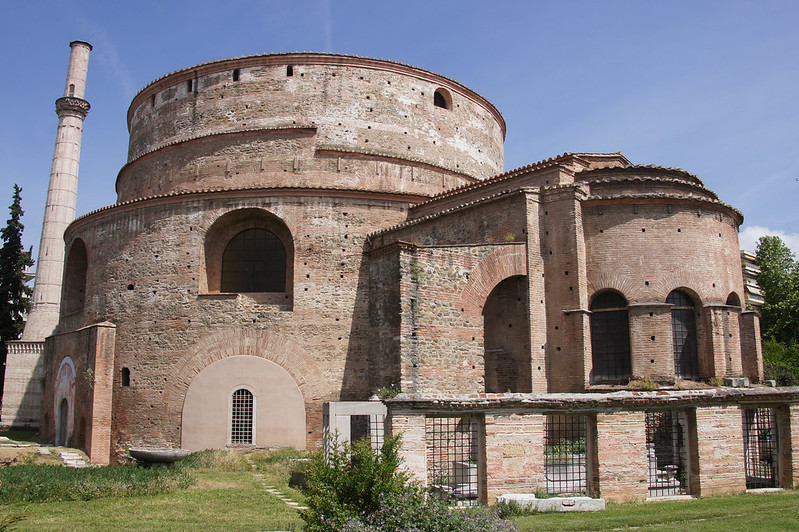
This is another temple taken for God, which was originally built to become a mausoleum for a Roman Emperor. This one was constructed for Galerius Valerius Maximianus, who actually ended the Diocletian Persecution (see: Number 3) with his Edict of Toleration. (Fun fact: Diocletian was his father-in-law.) Other Roman historians believe this structure was a Pagan temple dedicated to Zeus or the Kabeiroi, twin gods of dance in Greek mythology. In AD 379, it’s estimated this building became a Christian church under the reign of Emperor Theodosius. It is still open as a museum and church today.
7. Santi Cosma Damiano (Rome, Italy) — AD 309
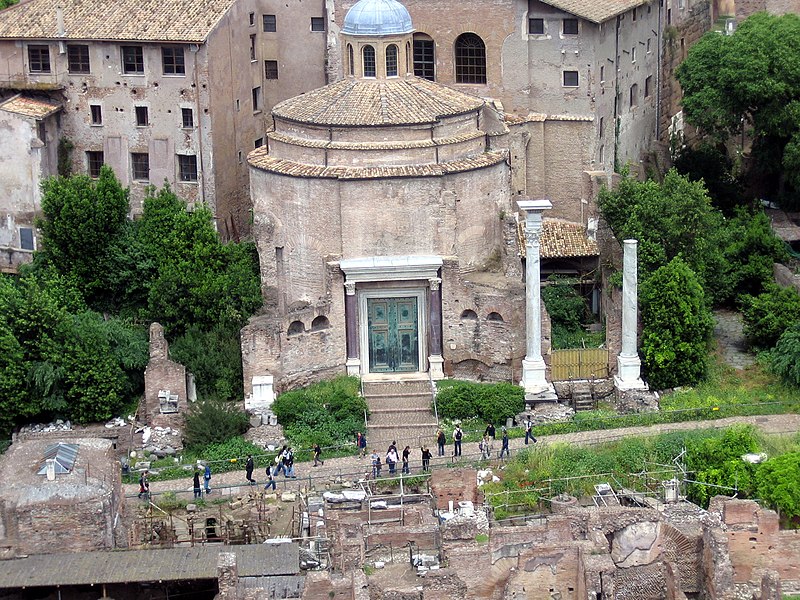
Originally, this site was built as the Temple of the Divine Romulus, for whom Rome was named. An ancient library, the Forum of Peace, was built nearby in the early 4th century but was the Basilica that brought it all together. The complete building was offered to Pope Felix IV, who later adapted the building to two brothers of Amalasunta (who offered the building to the Pontiff), named Cosma and Damiano. In 1512, Cardinal Alessandro Farnese entrusted to Basilica to the Franciscans of the Third Regular Order of Saint Francis, who still inhabit the place today. The building is most commonly known as a place where Cardinals can worship in private.
6. Cathedral of Saint Domnius (Split, Croatia) — AD 305
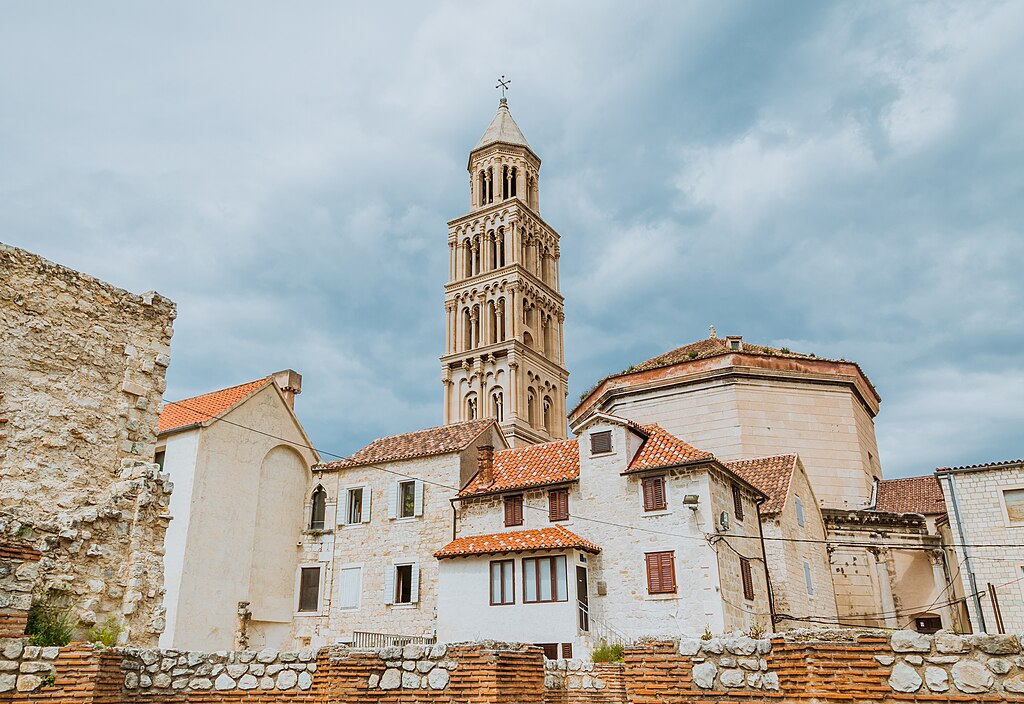
Although consecrated as a Christian church in the 7th century, this building was erected in AD 305 for another purpose. This was created as the mausoleum of Diocletian, whose reign of terror was historically one of the worst times for Christians in world history. Since the body of an emperor could not be buried in city limits by way of Roman law, Diocletian’s body needed a proper resting place. After his guard murdered him, that rule changed, so the city elected to buy Diocletian in part of his palace. In 653, citizens of Split, Croatia, wanted the building to have a new meaning, so the Bishop of Salona named Domnius consecrated the palace to God. Once canonized, Domnius was buried there as well.
5. Etchmiadzin Cathedral (Etchmiadzin, Armenia) — AD 301
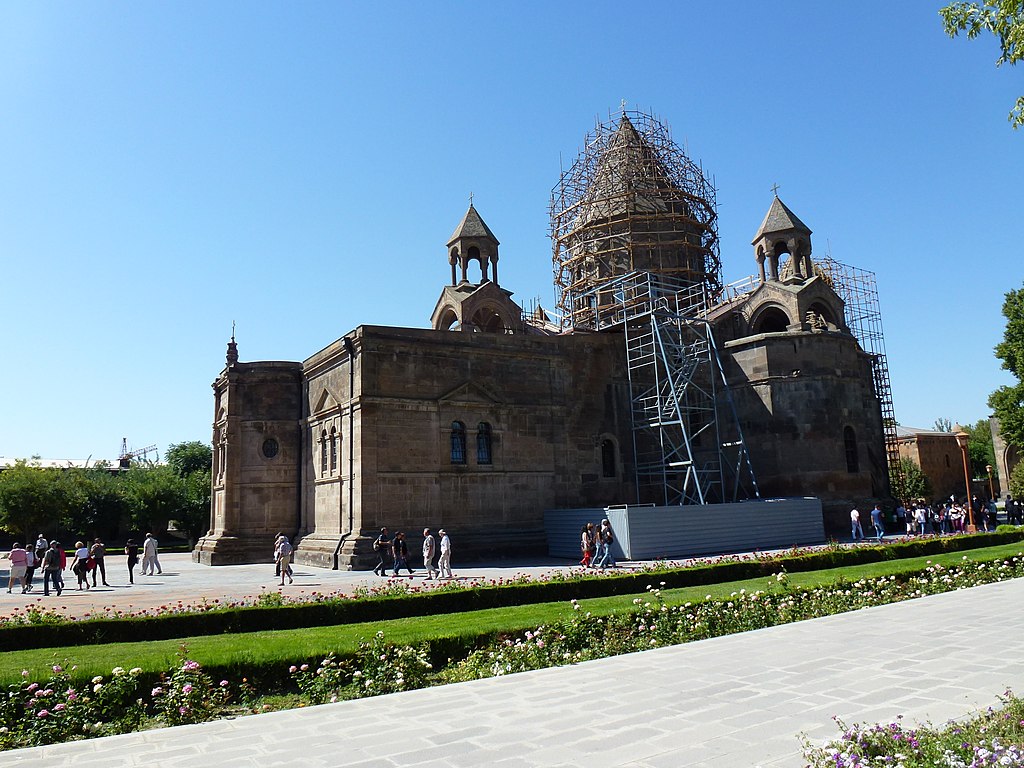
Known today as the Vatican of the Armenian Apostolic Church, the Etchmiadzin Cathedral is the oldest Orthodox Christian cathedral still standing. Interestingly, before the cathedral was constructed, this was the site of a Pagan temple. When Armenia established Christianity as the state religion by King Tiridates III, the temple was destroyed and the Etchmiadzin Cathedral was developed. Over the centuries, many parts of the Cathedral have been replaced or restored, chronicling the country’s architecture and design. There is a reported remnant from Noah’s Ark inside as well.
4. Aqaba Church (Aqaba, Jordan) — AD 293
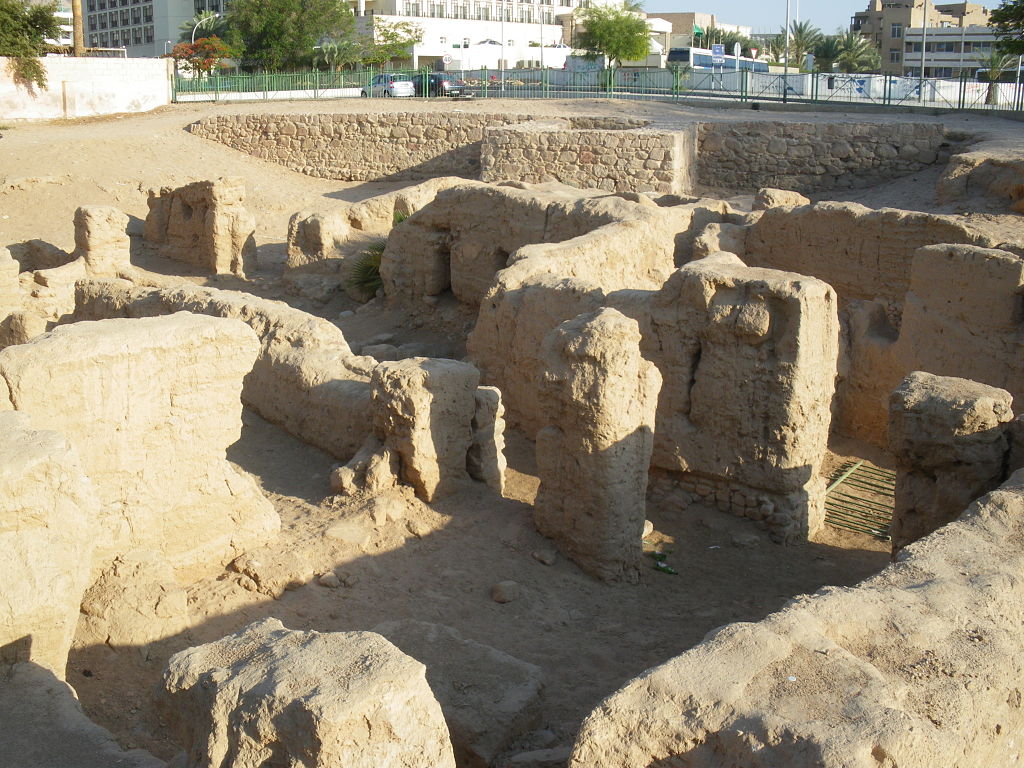
Unearthed in 1998, an archaeology team discovered this late Byzantine period church in Aqaba, Jordan, near the southwesternmost point of the country. Although only ruins, the team found that all the stones were from different timeframes, which means phases of this site could be dated back beyond the Churches of the Holy Sepulchre and Nativity. Historians determined this is the earliest known “purpose-built” Christian church in world history because of its large three-aisled Basilica, which means it wasn’t a house that became a church. It was built to be a place of worship.
3. Megiddo Church (Tel Megiddo, Israel) — AD 233
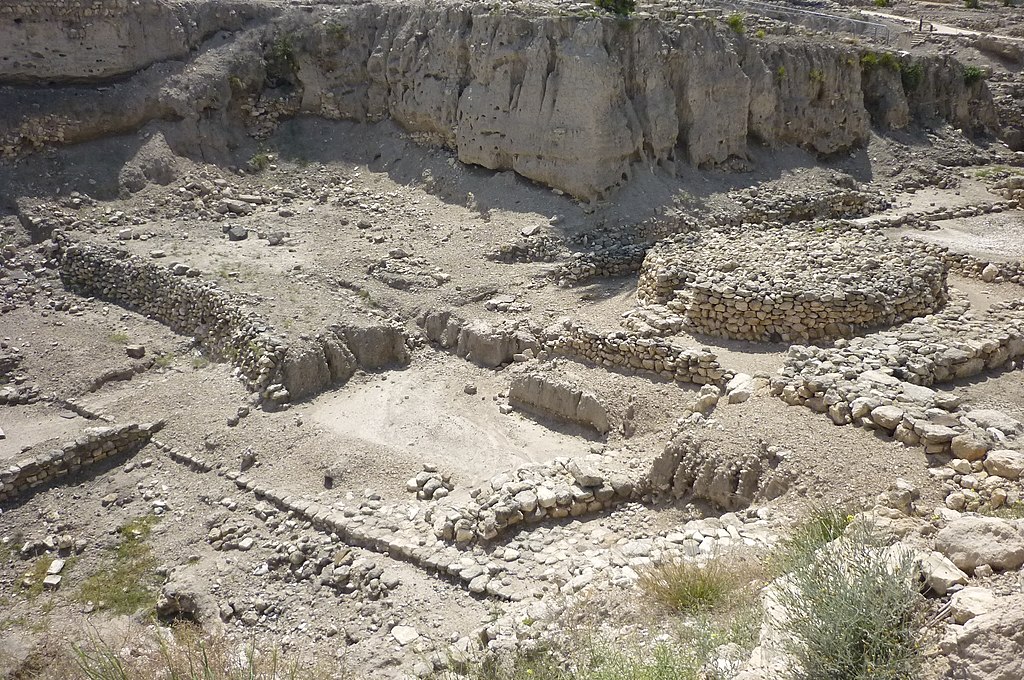
For eschatologist’s reading this article, this is, indeed, the location of Armageddon (Revelation 16:16). Once the royal city of the Canaanites (Joshua 12:21), this location in Tel Megiddo, Israel was first shared with the world as a prison. Abandoned during the Diocletianic Persecution, the most heinous of its kind by the Roman Empire against Christians. That was 302 A.D., but upon further review by an archeological team in 2005, there were several Christian inscriptions in Greek found to be dated earlier than that, including one of the Icthtus or “Ichthys” (i.e., the “Christian Fish”). Found on the mosaic floor in Koine Greek, another inscription said the building was dedicated to “the memory of the Lord Jesus Christ.”
2. Dura-Europos Church (Gharanji, Syria) — AD 232
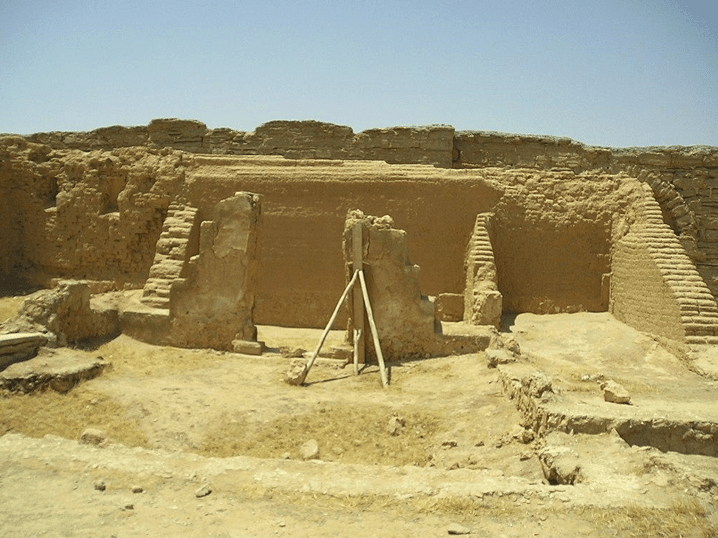
The top among the oldest churches in the world doesn’t look like this, which is a foundation of ancient ruins, but don’t let that fool you. When a team of French and American archaeologists discovered this location, it was considered one of the most important archaeological discoveries in history. As we know, the early Biblical church started in neighboring homes. Archaeologists were forbidden to study this location when ISIS occupied this region in the 1990s. However, upon discovery in the 1920s, radiocarbon dating and imagery showed this home was also used as a church for Christ-followers.
1. Pantheon (Rome, Italy) — AD 25
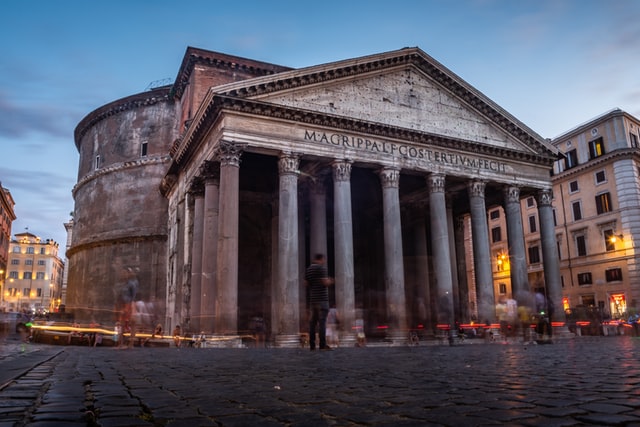
If you have been to Rome, one of the must-visit locations is the historic Pantheon. It is an architectural marvel of the ancient and modern world, first built only 25 years following the birth of Christ. But, it’s also tops among the oldest churches in the world too. This Roman temple was built by Agrippa (whose name is in the roof’s inscription) and dedicated to Roman’s 12 gods and the “living Sovran” (i.e., the monarch of the time, which was the Emperor Hadrian). It is the only ancient Roman structure that has remained intact until today. In 609 AD, Pope Boniface IV had the remains of many Christian martyrs removed from the Roman catacombs and placed inside the Pantheon. At that time, it was given its current name, “The Basilica of St. Mary and the Martyrs.”


